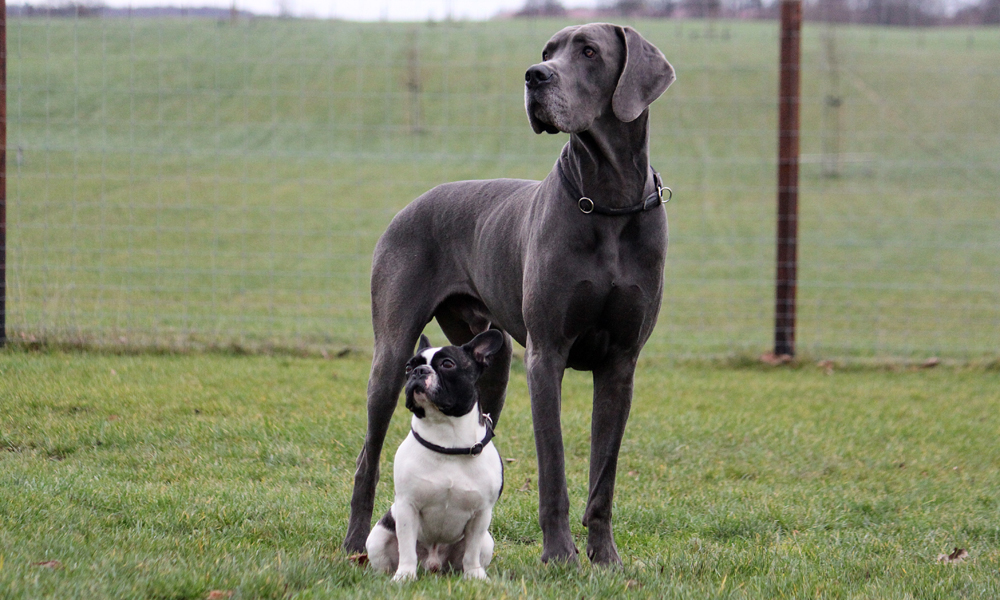Dogs come in all shapes and sizes, and if you’ve visited your local pet store recently, you probably noticed there are different dog food formulas for large and small breeds. But why is that? Aren’t all dogs pretty much the same on the inside? It turns out large and small dogs have varying nutritional needs, including calorie levels, nutritional density and the size of their kibble. Let’s explore the differences between large- and small-breed dog foods and why it’s so important to choose the right formula for your pet.
What is the difference between large- and small-breed dog food?
Throughout their lives, large and small dog breeds develop differently and face different kinds of health challenges that can be impacted by their diet. The main difference between large- and small-breed dog food is that each is formulated to meet these specific needs.
For example, large-breed dog foods are generally formulated to promote strong bones and good joint health to support their heavier frames. This is why large-breed dog foods contain optimal levels of glucosamine, calcium, fiber and other nutrients.
Smaller breeds, on the other hand, tend to have a higher metabolism and burn calories more quickly. According to the American Kennel Club, “small and toy breed dogs may actually require more calories per pound than large-breed dogs. Their higher metabolic rates particularly affect their dietary needs in puppyhood, and there are health concerns as they age that diet can help address.”
However, experts warn that just because smaller dogs need “more calories per pound,” that doesn’t mean owners should simply give them more food. Overfeeding can lead to obesity in dogs, which can have serious health ramifications. Instead, owners should strive to find the right dog food formula for their breed and follow the directions for proper portion size.
Does the size of kibble matter?
The answer to this question is a resounding, “Yes.” The reason is that small dogs can have difficulty chewing large pieces of kibble, which can not only cause discomfort and create an unpleasant dining experience but can also be a choking hazard. This is especially true for enthusiastic eaters that try to gobble down their food as quickly as possible.
Likewise, larger dogs can easily swallow small kibble without chewing at all. If they try to take down a whole mouthful, they can potentially choke, creating a real hazard. Swallowing food whole may also create digestive issues and cause discomfort. So, to make sure your pet is happy, healthy and comfortable when eating, it’s best to choose the right size kibble for their breed.
Focus on nutrition
Whether your dog is small enough to fit in a purse or large enough to play professional football, the most important thing is its nutrition. Choosing a dog food that is designed for their size, breed and stage of life can be the best way to promote long-term health. The Element Series from NutriSource is specially formulated to provide your pet with exceptional gut health to support whole-body health. Element comes in four delicious recipes all packed with animal protein and other vital nutrients to provide the advanced nutrition dogs need to live their best lives. By choosing the right dog food for your unique pet, you can help keep them happy and healthy from nose to tail.
Support your local community and buy NutriSource products from one of the independently owned and operated pet suppliers near you.


